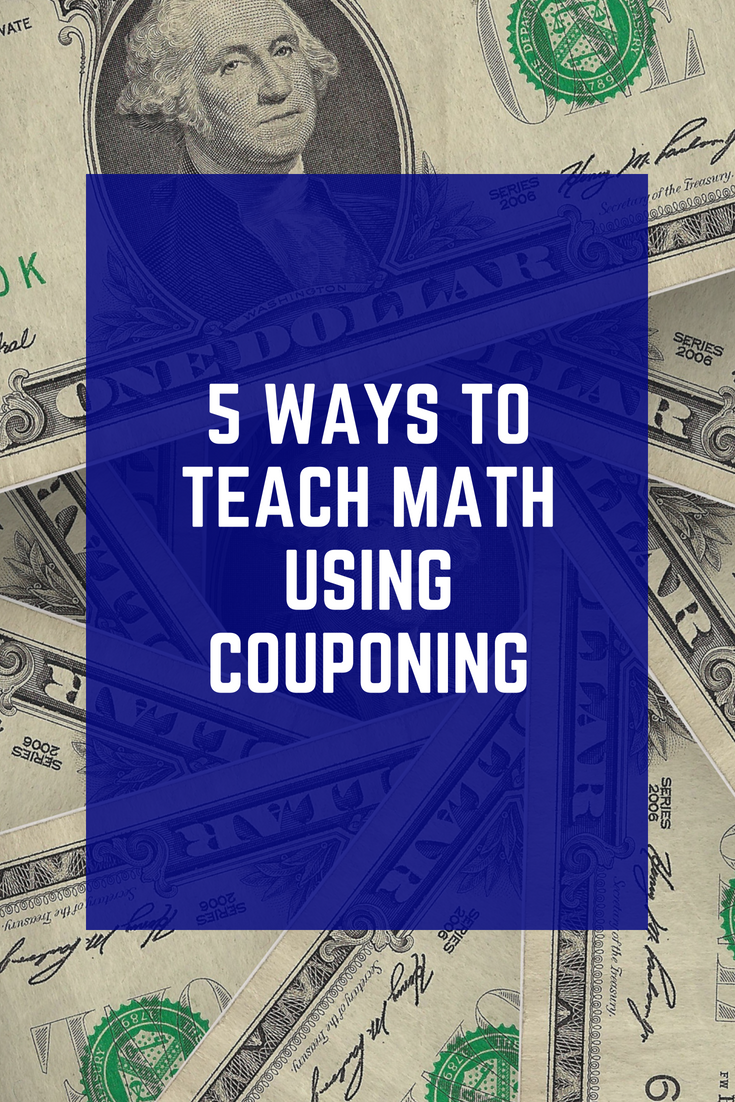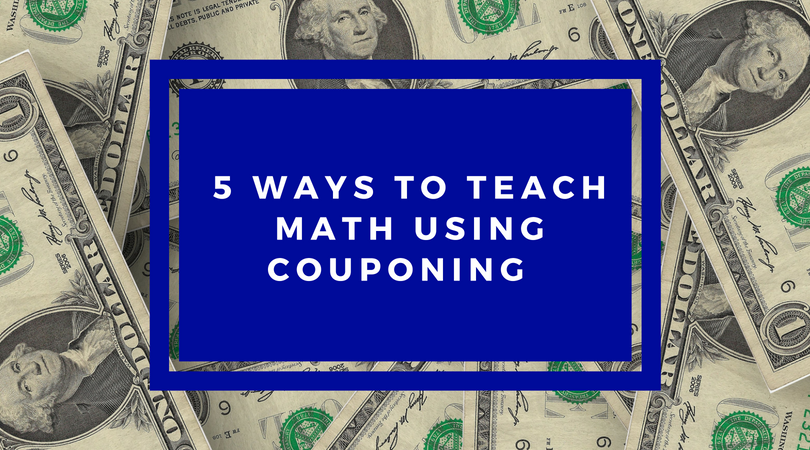
Hello!!! Welcome to this months five things. 5 things is an article where someone talks about 5 things they have learned, 5 ways to do something, 5 things to remember or do etc. Last months was 5 Things that I Have Learned As a Tutor. 5 things is also a way for us to hear from some other great people in our education community.
This month’s article is from an amazing guest writer Tiffany Thomas of The Crazy Shopping Cart.

*This article may contain affiliate links for full disclosure click here.
Tiffany Thomas is a former math teacher and SAHM who loves finding good deals! She and her husband, who is an engineer, work together on The Crazy Shopping Cart. They enjoy spending time with their family, geeking out over sci-fi together, and saving money.
This month she is sharing with us readers “5 Ways to Teach Math Using Couponing.” I hope that you will enjoy reading it as much as I have.
5 Ways to Teach Math Using Couponing
Before we begin this post, I have to make a confession: Prior to becoming a coupon blogger and a SAHM (and now a homeschooling mom), I was a math teacher. A middle school math teacher.
**Pause while everyone gasps in horror**
Yes, I know, quite terrifying. And you know what? I loved it.
Teaching math is my passion. It’s so much a part of me, that when I first started using coupons (a couple of years after I stopped teaching so I could stay home after having my first child), all I could think about was how much I wished I known this back in my teaching days!
You see, couponing is all about math. So today I want to share with you five math concepts that you can teach when using coupons!
1) Adding and Subtracting Decimals
When you work with money, you are going to have two decimal places (representing cents). If an item costs $1.99, and the coupon takes off $1, it doesn’t make sense that the item would now cost $1.98. Lining up the decimal places when you add and subtract makes a lot more sense when you do it with money!
2) Greater than, less than, or equal to
There is an app called Flipp that has a scan of every grocery store near you. You can search the app to see how much grapes cost at different stores, for example. Then you can discuss which store you’ll want to go to – which store has grapes for the lowest price? This will be especially useful for comparing decimals.
3) Percentages
Oftentimes, a coupon or sale will be for a certain percentage off of the price. Your child will learn how to take 25% off of a certain amount. This can be done with whole numbers (so incorporating rounding!), or with the decimals themselves (and thus learn about multiplying decimals!)
Ratios, Proportions, and Unit Price: Often with couponing, we want to make sure we are getting the best deal. If six rolls of toilet paper cost $3, and 8 rolls of toilet paper cost $3.50, which is the better deal? You have to break it down into how much one roll costs with each deal. This involves ratios, proportions, and unit price.
4) Unit Conversions
Sometimes when you are trying to find the unit price, the items are in different measurements. If a bottle of soda says how much in ounces, but another says the size in liters, you need to know how to convert between the two! Or, if you have tripled a recipe and now have 21 Tbsp, you can convert it into cups.
There are many more ways that coupons can help children learn more about math, but these are five important ones! If you have other ideas, or you just want to share how you were able to use these tips, I would love to hear about them! Please email back or put them in the comments!
And if you want to learn more about how to coupon, check out my FREE ebook that goes into detail on how you can easily save hundreds of dollars a year on groceries with only an extra 20 minutes per week!
Want Access to 5 Things Articles Before Non-Subscribers? Become a Subscriber
Another, thing about 5 things articles is that when one is released to the public another one is released as a Subscriber Exclusive. This months subscriber exclusive is written by Jillian Smart M.Ed.

Jillian Smart, M.Ed., is an award-winning CEO, master educator, and published author. She launched Jackson Education Support to develop more independent learners of all ages locally and around the world. This mission is accomplished by implementing personalized services and supporting engagement efforts. The approach is unique in that the firm leverages character development to affect cognitive development. Specialty areas include character strength, literacy, math, and science. To learn more visit Jillian’s Facebook Page Jackson Education Support.
This month Jillian is giving us a preparation list for back to school titled. “5 Things to Remember for Back to School”
If you want access to this awesome exclusive become a subscriber. Current subscribers, you will be receiving your copy later tonight. It will also be posted on the freebie page.
If you found this article helpful please share so that others can benefit as well. An easy way to do that is through Pinterest.

